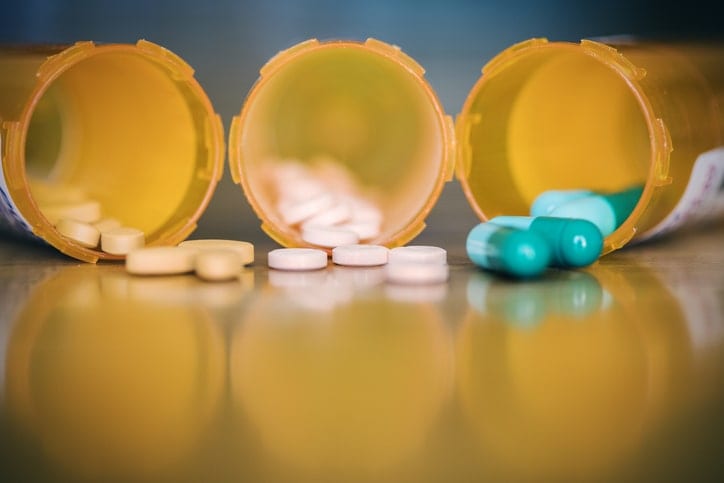Hydrocodone, commonly known as Vicodin, is a prescription opioid pain medication that can lead to addiction in as little as five days of use. Hydrocodone works by binding to the brain’s pain receptors, providing pain relief and inducing a euphoric state. The pleasurable effects of hydrocodone can reinforce its use and lead to addiction. Abusing hydrocodone often involves swallowing, injecting or snorting the drug. Mixing it with alcohol can be even more dangerous. Hydrocodone misuse and addiction can have severe consequences, including strained relationships, financial problems and legal issues. The withdrawal symptoms of hydrocodone include restlessness, joint pain and anxiety. Treatment for hydrocodone addiction typically involves a combination of medications and psychotherapy, including opioid receptor blockers and agonists. Seeking help from an addiction professional is crucial for those struggling with hydrocodone addiction.
Hydrocodone is a semi-synthetic Schedule II prescription opioid pain medication that is commonly known as Vicodin. Semi-synthetic opioids are synthesized from naturally occurring opium products. In as little as five days of prescribed use, the risk of developing a chronic hydrocodone addiction increases significantly. Hydrocodone is often prescribed for acute pain after procedures and works to relieve pain by binding to the mu opioid pain receptors in the brain which in effect, weakens or blocks the pain response and simultaneously induces a feel good state known as euphoria. The pain relief in combination with euphoria induces a positive reinforcement in the brain, which encourages individual’s to continue to use hydrocodone again and again, potentially leading into a cycle of addiction. Addiction is diagnosed on a spectrum from mild to moderate to severe. Some signs of hydrocodone addiction include taking more than intending to and prioritizing drug use over personal or professional responsibilities. As an individual’s tolerance to the effects of hydrocodone builds, they will need higher doses to keep withdrawal symptoms at bay. Addiction can result in strains on personal relationships, financial troubles, academic or job decline, poor judgment, and illegal activity.
Abusing hydrocodone
Hydrocodone is legally available as a tablet or oral liquid for acute pain and should only be used in the short term. Individuals most often abuse the drug by swallowing it but it can also be crushed and injected into veins or snorted to produce a more immediate high. It is common for individuals to mix hydrocodone and alcohol to achieve pleasurable effects, however this combination can be deadly as alcohol and opioids can have a synergistic effect on both the body and the brain. Due to the euphoric high, individuals will continue to use hydrocodone strictly for its euphoric effects which will increase the tolerance of this substance, requiring higher dosages each time this drug is used. Since hydrocodone is a commonly prescribed opioid medication, many individuals are able to obtain this medication from family members or friends but hydrocodone can also be purchased illegally on the street. Often times, when purchased on the street, hydrocodone can be combined with more potent opioid such as fentanyl or other chemicals that can result in immediate and fatal overdoses.
Looking at the numbers for hydrocodone abuse
According to statistics, opioid dependence affects approximately five million individuals in the United States each year and is responsible for 17,000 deaths each year in the U.S. The abuse potential for opioids begins at a young age, usually during adolescence or early adulthood and continues into middle and late adulthood. Americans make up approximately five percent of the world’s population but is responsible for 80% of the consumption of the world’s opioid supply and therefore have one of the largest opioid crises in the world. Prescription opioids are majorly responsible for this crises resulting in 46 deaths per day in 2012.
According to studies, hydrocodone/acetaminophen, commonly known as Vicodin, Norco or Lortab, had approximately 123.3 million prescriptions in 2014.
Signs and symptoms of hydrocodone misuse and abuse
- Blurry vision
- Lightheadedness
- Dizziness
- Itchy skin
- Constipation
- Drowsiness
- Pinpoint pupils
- Dry mouth
- Warm, flushed skin
- Slowed speech
Signs and symptoms of hydrocodone addiction
- Seeking the drug compulsively despite knowing the side effects
- Abandoning hobbies
- Strained relationships
- Social isolation
- Financial problems because of drug use
- Displaying reckless behavior such as driving while high
- Decline in work or academic performance
- Trouble with the law
Hydrocodone withdrawal
Hydrocodone withdrawal symptoms occur when people quit using the opioid suddenly after prolonged use. The symptoms may include restlessness, joint pain, increased heartbeat, sleeping problems and anxiety.
Treatment for hydrocodone addiction
Treatment for hydrocodone addiction is best suited with a combination of medications and psychotherapy. Intranasal or injectable naloxone, an opioid receptor blocker, is used to prevent opioid overdose by rapidly reversing the respiratory depression and sedation caused by opioid intoxication. Additional medications include methadone, an opioid agonist and buprenorphine, a partial opioid agonist and antagonist. These medications are given to ease the withdrawal effects of opioids and prevent future cravings. Buprenorphine is often mixed with naloxone and is known as Suboxone and is known to induce opioid withdrawals if taken with other opioids such as heroin or morphine. When not taken in conjunction with other opioid this medication aims to ease the withdrawal effects and prevent cravings. If you or someone you know is struggling with a hydrocodone addiction, it is important to seek help from an addiction professional.
